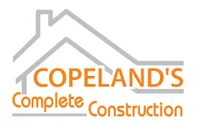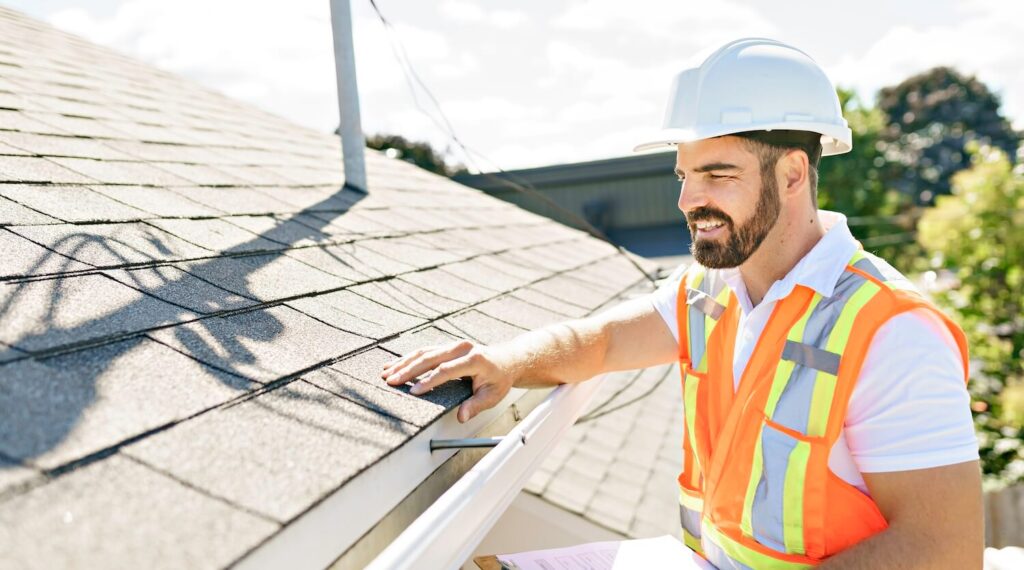The sky darkens, a familiar rumble echoes in the distance, and the weather forecast blares warnings of impending severe weather. In moments like these, our minds often race to secure outdoor furniture, charge devices, and stock up on essentials. But amidst this flurry of preparation, one crucial element often gets overlooked – the very structure that shelters us: our roof.
Your roof stands as the unwavering protector of your home, the first and most critical barrier against the relentless forces of nature. From torrential downpours and hailstorms to high winds and even the gradual wear and tear of daily exposure, it endures a constant barrage. Neglecting its upkeep is akin to leaving a castle gate unlatched before an invasion. This is precisely why regular roof inspections aren’t just a good idea; they are your proactive first line of defense against the potentially devastating consequences of storm damage.
The Silent Guardian: Understanding Your Roof’s Role
Before delving into the specifics of inspections, it’s vital to appreciate the intricate role your roof plays. It’s more than just shingles and beams; it’s a complex system designed to channel water away, maintain structural integrity, and protect your home’s interior from the elements. This system comprises various components working in harmony:
- The Underlayment: This protective layer lies beneath the visible roofing material, providing an additional barrier against water infiltration. Damage here can go unnoticed until significant leaks occur.
- Flashing: Installed around chimneys, vents, skylights, and other roof penetrations, flashing prevents water from seeping into vulnerable areas. Corrosion or improper sealing can compromise its effectiveness.
- Gutters and Downspouts: These channels are responsible for directing rainwater away from your home’s foundation. Blockages or damage can lead to water backup and potential structural issues.
- Ventilation: Proper attic ventilation regulates temperature and moisture levels, preventing condensation that can damage roofing materials and lead to mold growth.
- The Roofing Material (Shingles, Tiles, Metal, etc.): This is the outermost layer, bearing the brunt of weather exposure. Cracks, missing pieces, or granule loss can significantly reduce its protective capabilities.
When any of these components are compromised, your roof becomes vulnerable, especially when faced with the added stress of a storm. A seemingly minor issue can quickly escalate into a major problem under the pressure of high winds and heavy rain.
The Cost of Neglect: Why Proactive Inspections Matter
Ignoring the health of your roof is a gamble with potentially high stakes. The consequences of storm damage to an uninspected or poorly maintained roof can be far-reaching and costly:
- Leaks and Water Damage: This is perhaps the most immediate and obvious consequence. Water intrusion can damage ceilings, walls, insulation, and personal belongings. Mold growth, a common byproduct of water damage, poses serious health risks and can be expensive to remediate.
- Structural Damage: Persistent leaks can weaken the underlying roof structure, leading to sagging, rot, and even collapse in severe cases. Repairing structural damage is a significant undertaking, both in terms of cost and disruption.
- Increased Energy Bills: Damaged or poorly ventilated roofs can lead to energy inefficiency. Leaks can allow conditioned air to escape, while inadequate ventilation can cause your attic to overheat, forcing your HVAC system to work harder.
- Reduced Property Value: A visibly damaged or poorly maintained roof can significantly detract from your home’s curb appeal and overall value. Potential buyers will likely factor in the cost of roof repairs or replacement, leading to lower offers.
- Voided Warranties: Many roofing material warranties require regular professional inspections to remain valid. Neglecting these inspections could leave you footing the entire bill for repairs or replacements that might otherwise be covered.
- Safety Hazards: A severely damaged roof can pose safety risks, including the potential for falling debris or structural collapse, especially during or after a storm.
Regular roof inspections act as a preventative measure against these costly and potentially dangerous outcomes. By identifying and addressing minor issues early, you can prevent them from escalating into major problems when a storm hits.
The Anatomy of a Roof Inspection: What to Expect
A comprehensive roof inspection involves a thorough examination of all visible and accessible components of your roofing system. Whether you choose to conduct a preliminary visual check yourself or hire a qualified professional, understanding what to look for is essential.
DIY Visual Checks (Between Professional Inspections):
While not a substitute for a professional assessment, homeowners can perform regular visual checks from the ground and, if comfortable and safe, from a secure ladder. Look for:
- Missing, cracked, or curled shingles: These are obvious signs of damage that can leave your roof vulnerable to leaks.
- Loose or damaged flashing: Check around chimneys, vents, and other penetrations for any signs of gaps, corrosion, or damage.
- Sagging roof lines: This could indicate structural issues and requires immediate professional attention.
- Accumulation of debris: Excessive leaves, branches, or other debris can trap moisture and lead to rot or gutter blockages.
- Granule loss on shingles: This appears as dark patches or an excessive amount of granules in your gutters, indicating the shingles are losing their protective layer.
- Signs of leaks inside your home: Water stains on ceilings or walls are a clear indication of a roof leak.
Professional Roof Inspections:
A professional roof inspection is a more in-depth assessment conducted by trained and experienced individuals. They will typically:
- Examine the roofing materials closely: Checking for damage, wear and tear, and proper installation.
- Assess the flashing around all penetrations: Ensuring it is secure and watertight.
- Inspect the gutters and downspouts: Looking for blockages, damage, and proper drainage.
- Evaluate the attic ventilation: Checking for adequate airflow and signs of moisture buildup.
- Assess the structural integrity of the roof deck: Looking for signs of rot, sagging, or other damage.
- Provide a detailed report: Outlining any findings, recommending necessary repairs or maintenance, and often providing photographic evidence.
Timing is Everything: When to Schedule Roof Inspections
While regular inspections are crucial, certain times are particularly important for ensuring your roof is storm-ready:
- Annually: A yearly comprehensive inspection is a good practice to identify and address any developing issues.
- Before and After Storm Season: In regions prone to specific types of severe weather (e.g., hurricane season, hail season), pre-season inspections allow you to address vulnerabilities before they are tested, while post-season inspections can identify any damage sustained during the storms.
- After Significant Weather Events: Even if it’s not storm season, any significant weather event, such as a heavy hailstorm, high winds, or prolonged heavy rain, warrants a roof inspection. Hidden damage may not be immediately apparent.
- Before and After Major Home Projects: If you’ve had work done on your home that involved accessing the roof (e.g., installing solar panels, satellite dishes), a post-project inspection ensures no damage occurred during the process.
- When Buying or Selling a Home: A thorough roof inspection is a critical part of the home inspection process, providing valuable information about the roof’s condition and potential future expenses.
Choosing the Right Professional: Ensuring a Thorough Inspection
Selecting a qualified and reputable roofing contractor for your inspections is just as important as the inspection itself. Look for professionals who:
- Are licensed and insured: This protects you in case of accidents or damage during the inspection or subsequent repairs.
- Have a strong reputation and positive reviews: Check online reviews and ask for references from previous clients.
- Offer detailed inspection reports: A comprehensive report should clearly outline any findings and recommendations.
- Are experienced in your type of roofing system: Different roofing materials require specific knowledge and expertise.
- Provide transparent pricing: Understand the cost of the inspection and any potential repair work before committing.
- Do not pressure you into unnecessary repairs: A trustworthy contractor will provide an honest assessment and allow you to make informed decisions.
Investing in Peace of Mind: The Long-Term Benefits
While the cost of a roof inspection might seem like an added expense, it’s an investment in the long-term health and safety of your home. By proactively identifying and addressing minor issues, you can:
- Prevent costly emergency repairs: Addressing a few loose shingles is far less expensive than dealing with extensive water damage after a storm.
- Extend the lifespan of your roof: Regular maintenance and timely repairs can significantly prolong the life of your roofing system.
- Maintain your home’s value: A well-maintained roof is a valuable asset that protects your investment.
- Ensure the safety and comfort of your family: A sound roof provides a secure and dry environment for your loved ones.
- Gain peace of mind knowing you’ve taken proactive steps: Facing a storm with a recently inspected and well-maintained roof offers significant reassurance.
Conclusion: A Proactive Approach to Weathering the Storm
In the face of Florida’s dynamic weather, from intense summer thunderstorms to the occasional tropical threat, a reactive approach to roof maintenance is a gamble you can’t afford to take. Waiting for telltale leaks or visible damage means risking significant financial burdens and potential safety hazards.
Your roof is the steadfast protector of your Lakeland home, your primary shield against the elements. Don’t leave its integrity to chance. Empower yourself with the knowledge and security that comes from a professional assessment. Take proactive control and fortify your first line of defense today. Contact a qualified and reputable roofing contractor in Lakeland, FL, like Copeland’s Complete Construction, to schedule a comprehensive roof inspection. Their trained eyes can identify subtle vulnerabilities that might otherwise go unnoticed, ensuring your roof is ready to weather any storm. Investing in a professional inspection is an investment in your peace of mind, the longevity of your home, and the safety of your loved ones. Don’t wait for the next downpour to reveal a weakness; secure your protection now.

